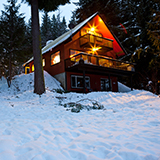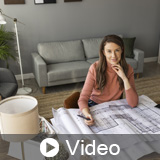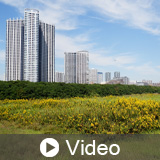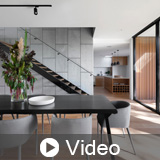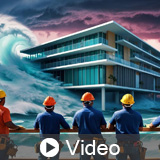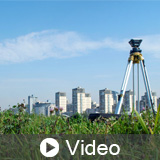Have you ever wondered about the untapped potential of esoteric design strategies in shaping the future of sustainable architecture? What design strategies are innovators, disruptors, and mavericks using to advance sustainable design? In this course we explore uncommon LEED v4.1 BD+C pilot credits and review how projects...
American Institute of Architects
1 Upcoming Webinars
|
Wed Dec 17 - 12:00 pm EST
|
150 Online Courses
Premium Course
|
|
This one hour documentary is part two of a case study focusing on an off the grid residence in northern Washington. The course explores how to calculate a solar array, PV panel installation strategies for different types of roofs, harvesting renewable materials on site, and composting toilets vs. septic tanks. Exclusive...
|
|
In this presentation, we explore how deadly diseases have impacted cities and affected urban planning. We discuss how urbanization contributes to pandemics and how diseases like the bubonic plague, Spanish influenza, and SARS changed how cities operate. Our team will review how hospitals, clinics, and other healthcare pr...
|
|
Welcome to Earth's most terrifying reality show - and you're already starring in it. Right now, as you read this, ancient permafrost is melting and releasing methane bombs that have been sleeping for millennia. Ice sheets the size of countries are collapsing into the ocean. Entire species are vanishing before we even dis...
|
|
In this course, we describe how design professionals can achieve the LEED v4.1 BD+C and O+M Rainwater Management Credit. In addition, we discuss green infrastructure and low-impact development strategies and how they can help for project sites.
|
|
The impending climate crisis casts a looming shadow over our planet, and the responsibility to avert catastrophe falls upon us all. Design professionals can wield their creative powers to conceive sustainable, resilient, and regenerative solutions before it's too late. Diverting construction waste from landfills and prom...
|
|
In a world where climate change rages unchecked, the skies weep acid rain, monstrous storms destroy coastal cities, vibrant communities turn into desert wastelands, millions flee their homes, entire species go extinct, and ecosystems collapse. Renewable energy can play a vital role in addressing these challenges and miti...
|
|
Imagine this scenario: skyscrapers that breathe sustainability, neighborhoods that pulsate with community vibrancy, and cities that hum with innovation. This is the future we envision. Through a captivating blend of in-depth case studies, insightful analyses of proven practices, and visionary examination of cutting-edge...
|
|
In this course, we describe how design professionals can achieve the LEED v4.1 BD+C Sensitive Land Protection credit and reduce environmental impacts for building sites. We review sensitive land areas including wildlife habitat, wetlands, prime farmland, floodplains, and water bodies.
|
|
Noise can negatively affect human health and productivity in the workplace. Poor acoustic performance can critically affect learning in schools and impact healing at healthcare facilities. It is imperative that design professionals balance acoustical design strategies when planning systems and indoor spaces. In this pres...
|
|
In this course, we explain how to achieve the LEED v4.1 BD+C and ID+C MR: Sourcing of Raw Materials credit and how to specify environmentally friendly building materials. We review FSC certification, recycled content, and how bio-based materials could change the future of construction.
|
|
Ever wonder why that fluorescent-lit hallway gives you the creeps? Turns out, millions of people on the internet figured it out. When an anonymous internet post about endless yellow office spaces went viral, it accidentally created one of the largest public engagements with architectural psychology. This course explores...
|
|
As severe weather events and rising sea levels threaten to reshape our coastlines and devastate communities, our team discusses cutting-edge strategies to create resilient, sustainable structures that can withstand nature's fury. We explore LEED v4.1's robust framework for climate-adaptive design, exploring innovative te...
|
|
A LEED site assessment evaluates environmental features that the design of a sustainable site and building should take into consideration. A well-developed assessment conducted before or during the conceptual design phase may reduce project costs and risks, promote occupants’ health, and honor a site’s unique characteris...
|
|
In the 2010 ADA/ABA Standards for Accessible Design, the U.S. Access Board added requirements for residential facilities. These requirements are not for multi-family housing projects or for single family housing, but housing required to be accessible by the ADA and ABA. This course will explain the difference between the...
|
|
What do a 2,400-year-old philosopher and today’s toughest client meetings have in common? More than you think. In this course, you’ll discover how ancient Greek Cynic philosophy can help you defuse conflict, win over clients, and keep your sustainable design goals on track. Packed with real-world case studies and practic...
|
|
Discover a radical new lens on design in this course on material vitalism—an approach that redefines materials not as passive stuff, but as active participants in shaping architecture. We'll explore how matter itself can tell stories, shape experiences, and even guide design choices, from the weathered warmth of timber t...
|
|
This one-hour narrated course highlights the common oversights architects and contractors often make when addressing accessibility on multifamily projects in two critical areas of project development: design and construction. We will review real-life examples coupled with simple solutions to help you in creating complian...
|
|
We're facing an unprecedented crisis of connection in our communities. While we've become more digitally linked than ever before, genuine human connection is becoming increasingly rare. As a design professional, you hold extraordinary power to address this crisis through the spaces you create. Your buildings don't just h...
|
|
Your brain is lying to you about sound. What you hear isn't what's actually there—it's a carefully constructed illusion your neural circuitry builds in milliseconds. Welcome to the hidden dimension of architecture. This course cracks open the secret world where neuroscience collides with building design. You'll discover...
|




